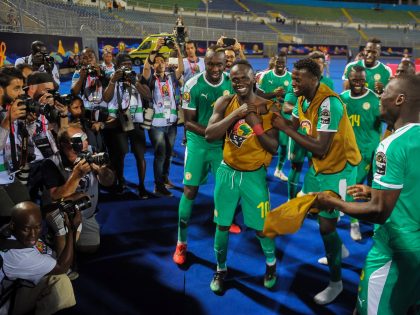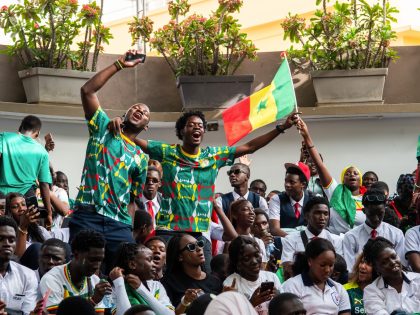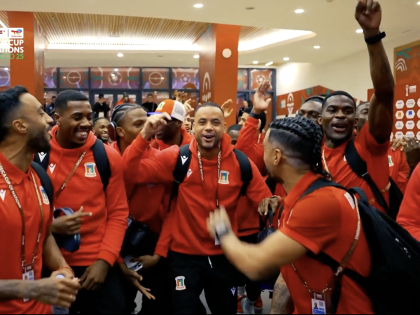Anthony Bourdain goes to South Africa
For his CNN food travel show, Bourdain picks black Gauteng rather than pretend-European Cape Town and the Western Cape.

Bourdain and journalist Percy Mabandu.
In a recent episode of his CNN “Parts Unknown,” the American chef and writer Anthony Bourdain traveled to South Africa. In my mind at least, this episode was long overdue and in fact, I’ve even said so on this blog in the past. The episode focuses on Gauteng Province (Johannesburg and Pretoria), signaling to a desire on the producers’ part to focus on emerging and predominantly urban black South African sensibilities and avoiding the pre-packaged, proto-European sensibilities and more superficially palatable aesthetics of Cape Town and the Western Cape altogether. The result is at once an imperfect and incomplete, yet compelling glimpse into one of the most complicated and confusing places in the world. Bourdain seems to consciously acknowledge this illogical and indecipherable quality from the very opening sequence, as he stands in Pretoria’s Kruger Square mocking statues of 19th and early 20th century white Afrikaner war heroes (Paul Kruger among them). He harps on the surrealism that these statues haven’t been torn down and what’s more, that the square is filled with black South Africans posing for photographs in front of these monuments of apartheid rule and Afrikaner imperial wet dreams.
Bourdain’s commentary here sets the tone for the rest of the episode: he seems uncharacteristically defeated or confounded by this place and its people. And that is fine.
More than fine–good even. Bourdain has made a name for himself through his cynicism, little ironic quips, and humorously biting zingers. This time however, these signature narrative devices are almost shockingly absent. He appears to be aware that such reporting is inadequate in a place like South Africa. At times, the show on some level almost conveys a collective sense of PTSD that leaves the host and viewer rattled.
He covers all his bases, maneuvering through a variety of issues and locales that typically dominate conversations of the region: African immigrants in Yeoville, Hillbrow’s notoriety, the fundamentally aspirational nature of today’s black urban youth cultures in South Africa, the demands and desires of the ‘born-frees” (the children born after freedom or too young to experience Apartheid), the “Soweto (soccer) Derby” between Orlando Pirates and Kaizer Chiefs, urban revitalization projects (through a visit to the Neighborgoods Market in Braamfontein), the shortcomings of the ruling ANC. Though he does not identify them, members of Julius Malema’s new party the Economic Freedom Fighters (they’re shown protesting) even make an appearance.
Given that the episode was filmed while Nelson Mandela was in hospital and conversations of life after Mandela were at a fever-pitch (well in the western press at least), Bourdain unsurprisingly falls into the trap of equating all of South Africa’s achievements (“the country he freed”) and successes with the former leader. However, in the few instances when Anthony Bourdain asks about what happens when Mandela dies outright, his South African interlocutors (members of BLK JKS and then journalist Percy Mabanda) do a very good job of gently setting him back on the right track. While politely acknowledging the appeal of the tendency to think of the man as representative of South Africans’ collective better intentions as a nation, they all make sure to emphasize that the country and the man are not one in the same. Though his death will be a great loss, the people and the country will go on, they offer.
More than anything else, the episode offers a glimpse into the world of a very specific socioeconomic demographic in South Africa: that of the young, predominantly black, educated, and upwardly-mobile urban middle class. (Bourdain hangs out with eclectic Yeoville-based chef Sanza Sandile, the BLK JKS in a Soweto shebeen, and Mabanda at Maboneng Neighborgoods Market.)
However, there are awkward moments. Aside from two truly bizarre segments where Bourdain hunts eland on the sizable game farm of Prospero Bailey, the descendant of a rich, white Johannesburg family and eats at a very white butcher’s in Pretoria adorned with Apartheid South African flags (which we won’t go into here since it could make for an entire post on its own), the two most awkward interactions in the episode involve individuals that do not fall neatly into the small subset of upwardly mobile black South Africans. Rather, these interactions are with people who could more conceivably be seen as members of the South African “masses.”
The individuals I’m referring to are the Hillbrow-based DJ Les, and the minibus taxi driver, Mdu–both of whom Bourdain struggles to relate to and he therefore comes off as awkward and uncomfortable in these scenes. We get little sense of their world, except disjointed scenes. This is not to say that choosing to focus on the aforementioned demographic was a good or bad thing overall. Such monolithic judgements would be inaccurate, it is simply an interesting aspect of the episode to be aware of.



















